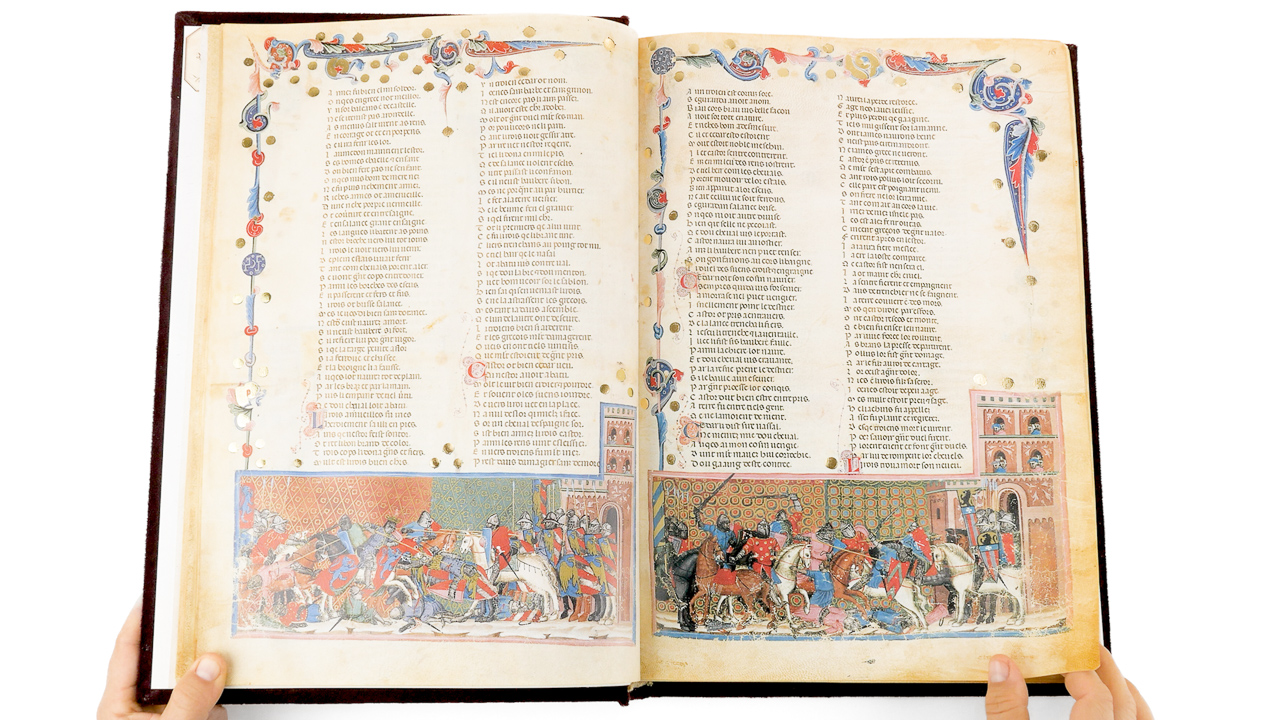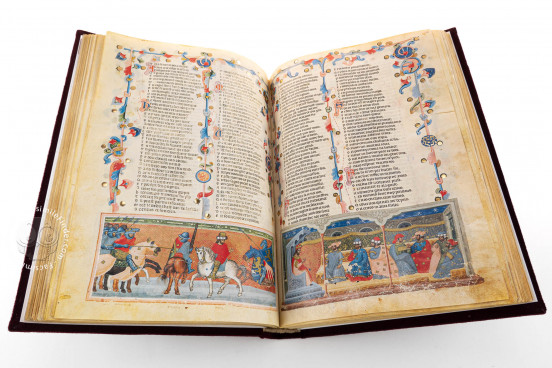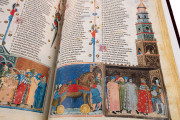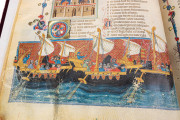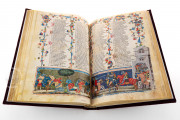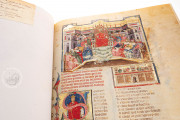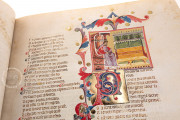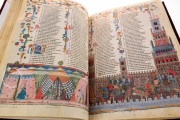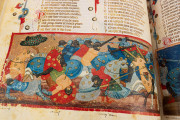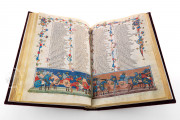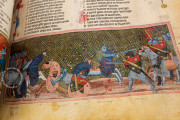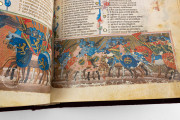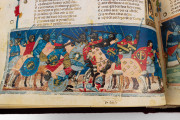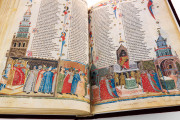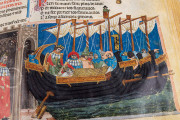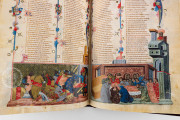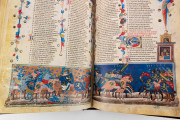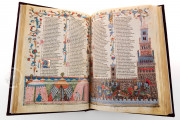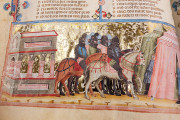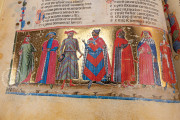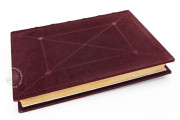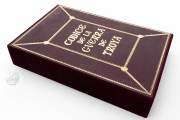The Saint Petersburg Roman de Troie (Romance of Troy) is the most abundantly illustrated surviving copy of the text. Its miniatures, which populate every page of the book, include representations of action-packed battles, luxurious interiors, and courtly figures engaged in a variety of activities. Created in Italy in the mid-fourteenth century, the codex flaunts a total of 341 miniatures and sixty-one painted initials.
The Roman de Troie is a French-language romance composed by Benoît de Sainte-Maure in the mid-twelfth century and was disseminated widely in France and Italy in the thirteenth and fourteenth centuries. Its more than 30,000 rhyming octosyllabic verses tell the story of the Trojan War in the form of a medieval epic as if an eyewitness account by the Trojan Dares.
A Singular Artistic Achievement
The Saint Petersburg manuscript is the largest surviving copy of the Roman de Troie. It makes a stunning impression not only for its size—the pages measure 41 × 28 cm—but also for its many miniatures and the lush decoration found in the margins and the intercolumnation of most of its pages.
Narrative Miniatures
The illustrations in the Saint Petersburg manuscript narrate the content of the Roman de Troie in great detail, comprising the perfect complement to the poetic composition. The miniatures are primarily organized in the large bas-de-page (bottoms of the page) but sometimes extend up into the outer margin. Many represent battles of the Trojan War—one with a centaur wielding a bow and arrow—and tent encampments. There are also indoor scenes featuring richly clad figures engaged in ceremonies, discussions, or amorous encounters. And, toward the end of the book (fol. 142r), is a representation of the famous wooden horse being drawn into the doomed city of Troy.
An Italian Bookhand
The Italian origin of the manuscript is clear from the appearance of the text. Written in varying shades of brown and black, the script is representative of fourteenth-century Italian Rotunda. The text is written in two columns, with the first letter of each verse offset into the margin. Large, painted initials and two-line red and blue initials featuring elegant pen flourishing further articulate the text's poetic structure.
The Italian Craze for French Romances
French romances were widely read and copied throughout Italy in the fourteenth century, their tales of daring-do and amorous adventure eagerly read and heard by the Italian elite. In the case of the Roman de Troie, copies of the text produced in Italy surpass the copies of French origin both in their physical size and the extent of their decoration.
Across the Alps and into the Hands of a Russian Bibliophile
The Saint Petersburg Roman de Troie must have been commissioned by a person of means, but it is uncertain where the manuscript was made. Although the illumination is in the style of Bologna, and the manuscript may have been copied there, a Bolognese artist could have traveled to a ducal court elsewhere in Italy to work on the commission.
It is unknown how the manuscript found its way to France, where it was by the seventeenth century in the library of Pierre Séguier (1588-1672). The manuscript was in the possession of the Benedictine Abbey of Saint-Germain-des-Prés in Paris by 1868, and Peter P. Dubrovsky (1754-1816) acquired the book from Saint-Germain in the late eighteenth century.
Tsar Alexander I purchased Dubrovsky's collection in 1805 to form a major component of the manuscripts division of the Imperial Public Library (in 1918 renamed the Russian Public Library, known from 1932 to 1937 as the Saltykov-Shchedrin State Public Library, and now the National Library of Russia).
We have 1 facsimile edition of the manuscript "Saint Petersburg Roman de Troie": Códice de la Guerra de Troya facsimile edition, published by AyN Ediciones, 2003
Request Info / Price
